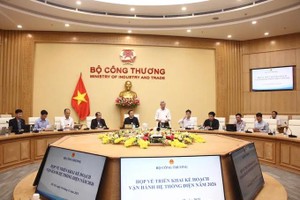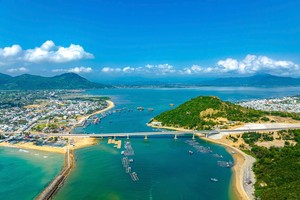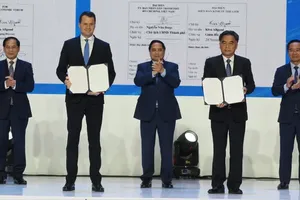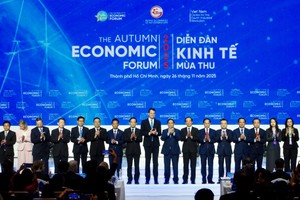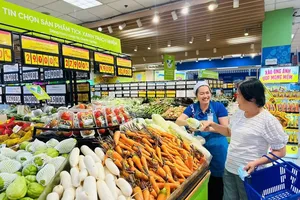
Chairing a conference on sustainable development of wood processing and forestry export in Ho Chi Minh City on August 8, the Prime Minister said that the sector should make tireless efforts to fulfill the target of 9 billion USD in export turnover in 2018, 10-11 billion USD by 2019, 12-13 billion by 2020, and 18-20 billion USD by 2015.
It is necessary to draw up support policies for wood processing and forestry production establishments so as to realise the set goals and create more jobs in mountainous and rural areas, he emphasised.
The Government leader laid stress on the sound implementation of the 2017 Law on Forestry, regarding forestry as a special technical economic sector in the value chain of forestry products from management, protection and development to forest utilisation, processing and trade of forest products.
He encouraged investing in planting material forests and applying science and technology in forest planting, wood processing and forestry exports, while asking the sector to focus on market development and take advantages of international trade agreements that Vietnam has signed.
PM Phuc noticed agencies and localities to promote communication work to raise public awareness of the use of wood. He highlighted the role of associations and the business community, suggesting enterprises respect international law, use materials legally and do research in international markets carefully to prevent trade conflicts.
The PM stressed the need to establish a trade mark for Vietnam’s wood, announcing that after the meeting, a Directive on facilitation to the fast and sustainable development of the wood processing industry and forestry exports will be issued.
In the past years, the forestry industry has affirmed its position as an important economic sector of the country, with wood and wooden products accounting for 6 percent of the world’s market share. Made-in-Vietnam wooden products have been present at 120 countries and territories.
Forestry exports enjoy the average growth of 13 percent per year during 2010-2017 and reached 8 billion USD last year, up 10.2 percent from 2016 and fulfilled the goal three years ahead of schedule in the forestry development strategy during 2006-2020.
Apart from contributing to the national economic growth, the forestry sector, with about 4,500 enterprises, have created jobs for 500,000 workers at processing facilities and millions of labourers who get involved forest planting in mountainous and rural areas.
It is necessary to draw up support policies for wood processing and forestry production establishments so as to realise the set goals and create more jobs in mountainous and rural areas, he emphasised.
The Government leader laid stress on the sound implementation of the 2017 Law on Forestry, regarding forestry as a special technical economic sector in the value chain of forestry products from management, protection and development to forest utilisation, processing and trade of forest products.
He encouraged investing in planting material forests and applying science and technology in forest planting, wood processing and forestry exports, while asking the sector to focus on market development and take advantages of international trade agreements that Vietnam has signed.
PM Phuc noticed agencies and localities to promote communication work to raise public awareness of the use of wood. He highlighted the role of associations and the business community, suggesting enterprises respect international law, use materials legally and do research in international markets carefully to prevent trade conflicts.
The PM stressed the need to establish a trade mark for Vietnam’s wood, announcing that after the meeting, a Directive on facilitation to the fast and sustainable development of the wood processing industry and forestry exports will be issued.
In the past years, the forestry industry has affirmed its position as an important economic sector of the country, with wood and wooden products accounting for 6 percent of the world’s market share. Made-in-Vietnam wooden products have been present at 120 countries and territories.
Forestry exports enjoy the average growth of 13 percent per year during 2010-2017 and reached 8 billion USD last year, up 10.2 percent from 2016 and fulfilled the goal three years ahead of schedule in the forestry development strategy during 2006-2020.
Apart from contributing to the national economic growth, the forestry sector, with about 4,500 enterprises, have created jobs for 500,000 workers at processing facilities and millions of labourers who get involved forest planting in mountainous and rural areas.




